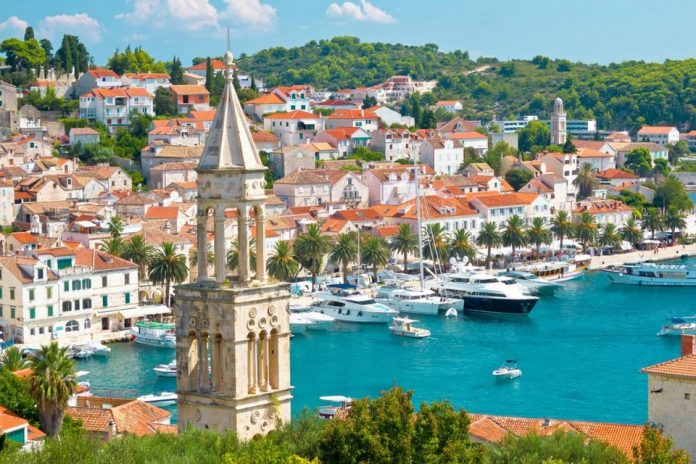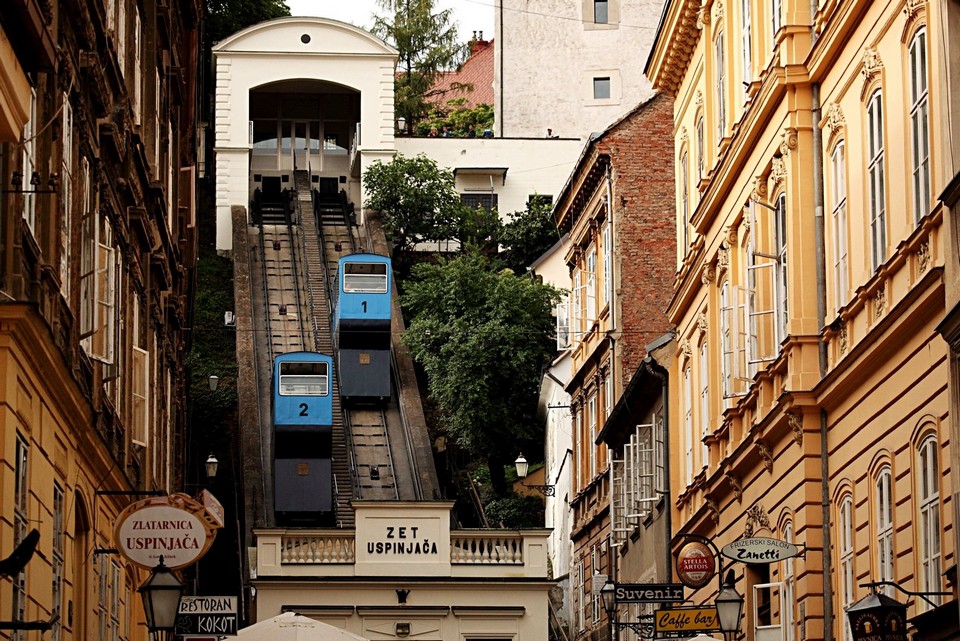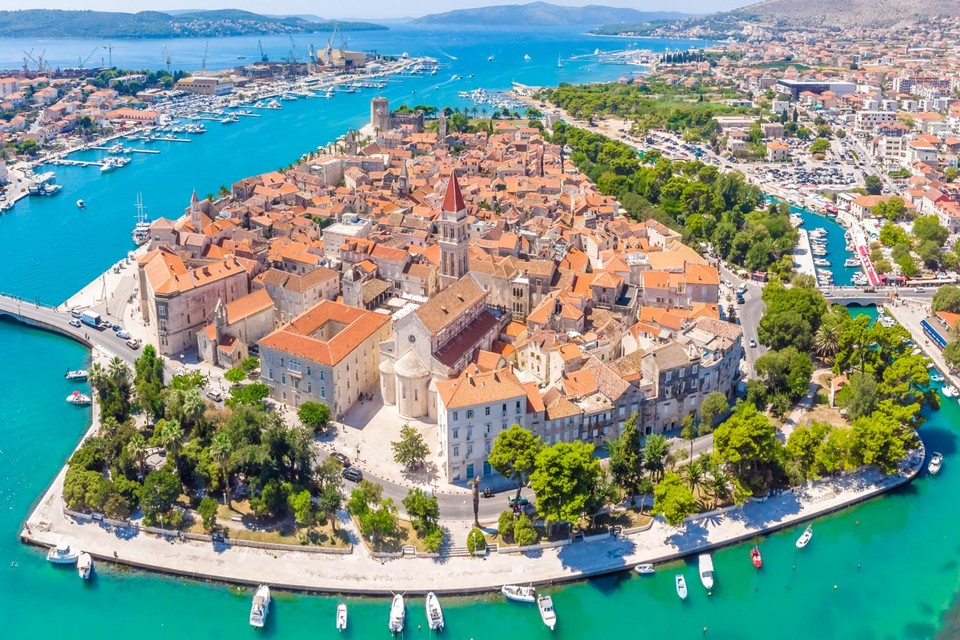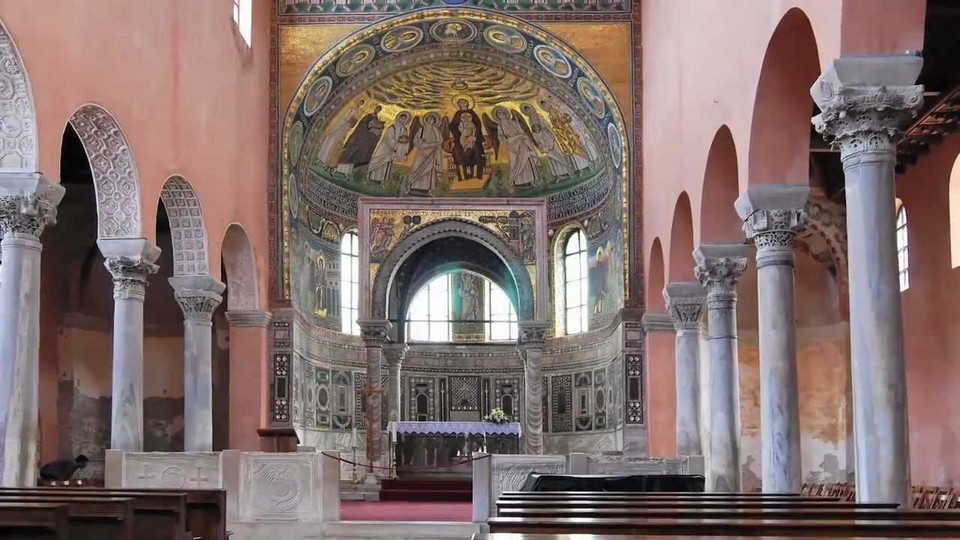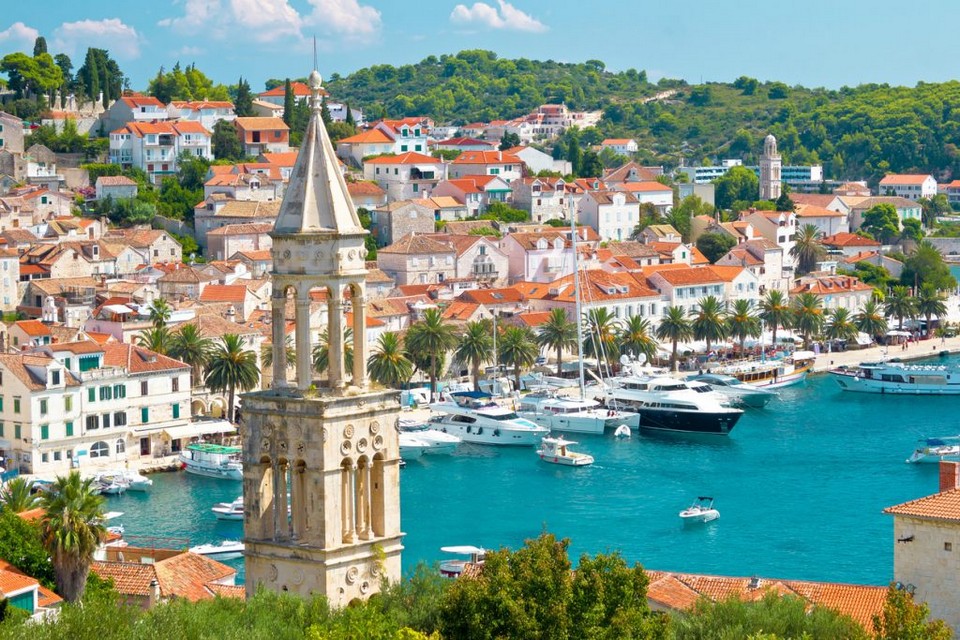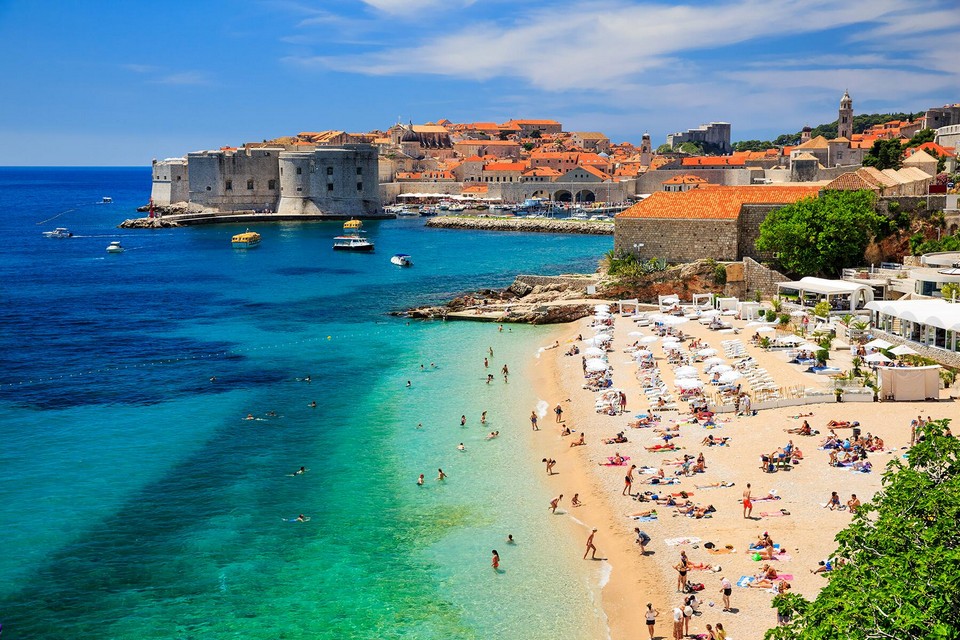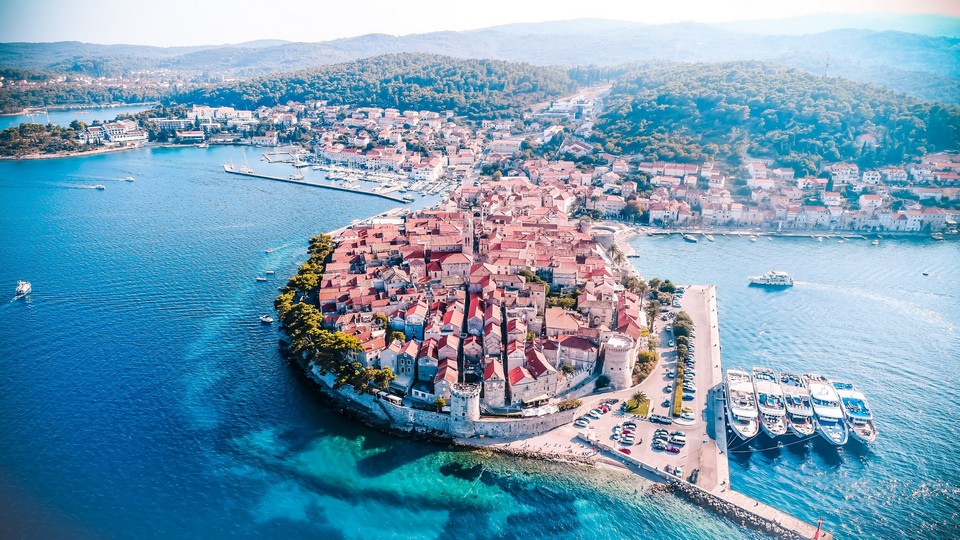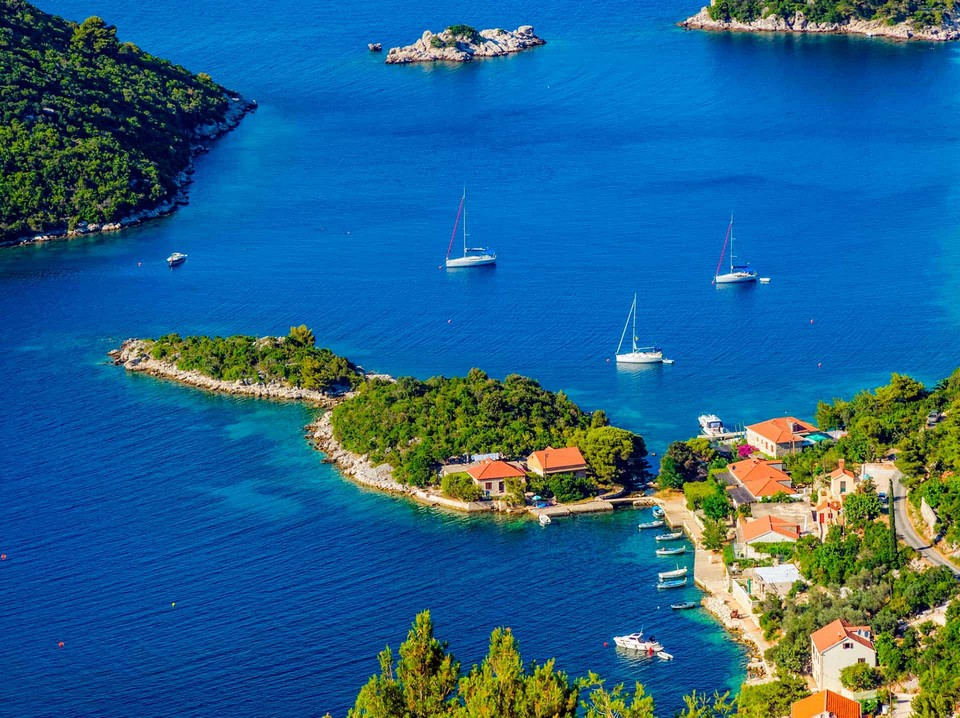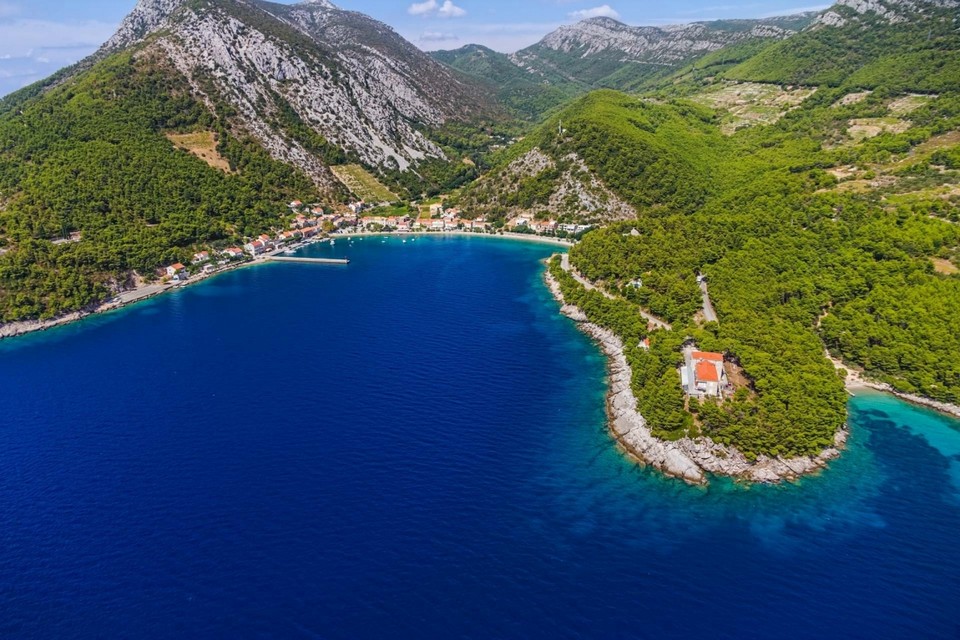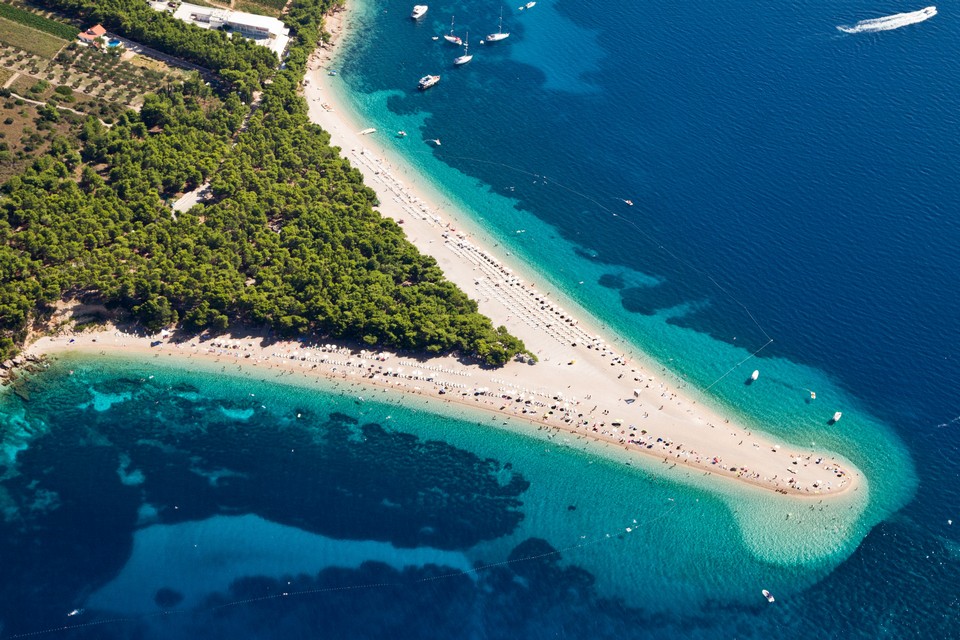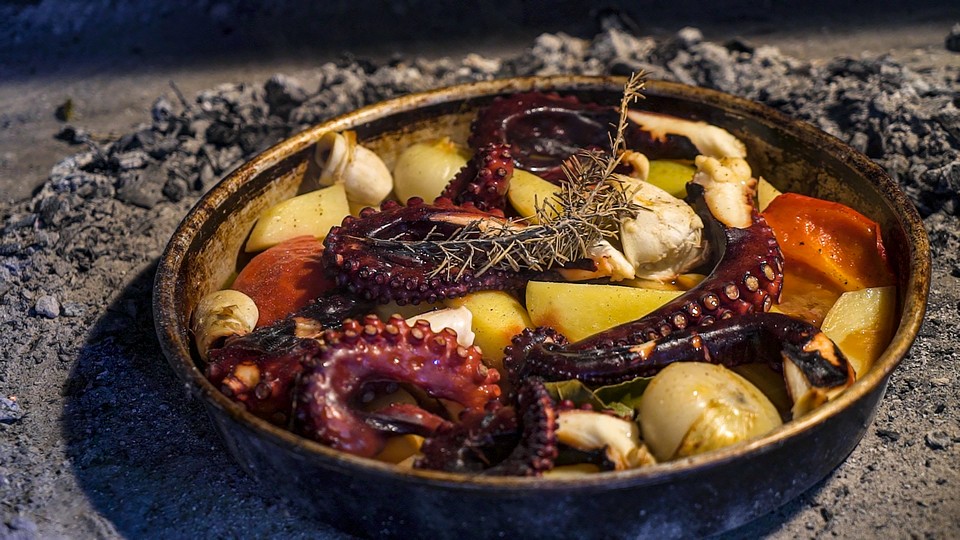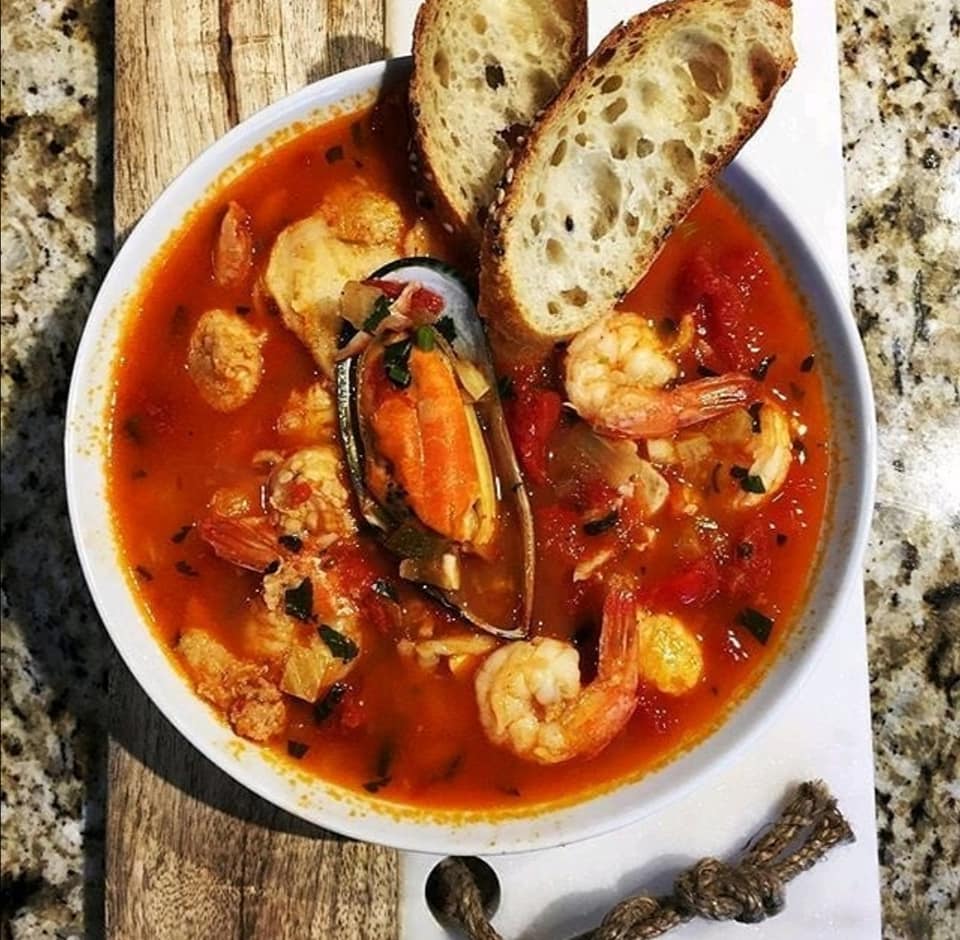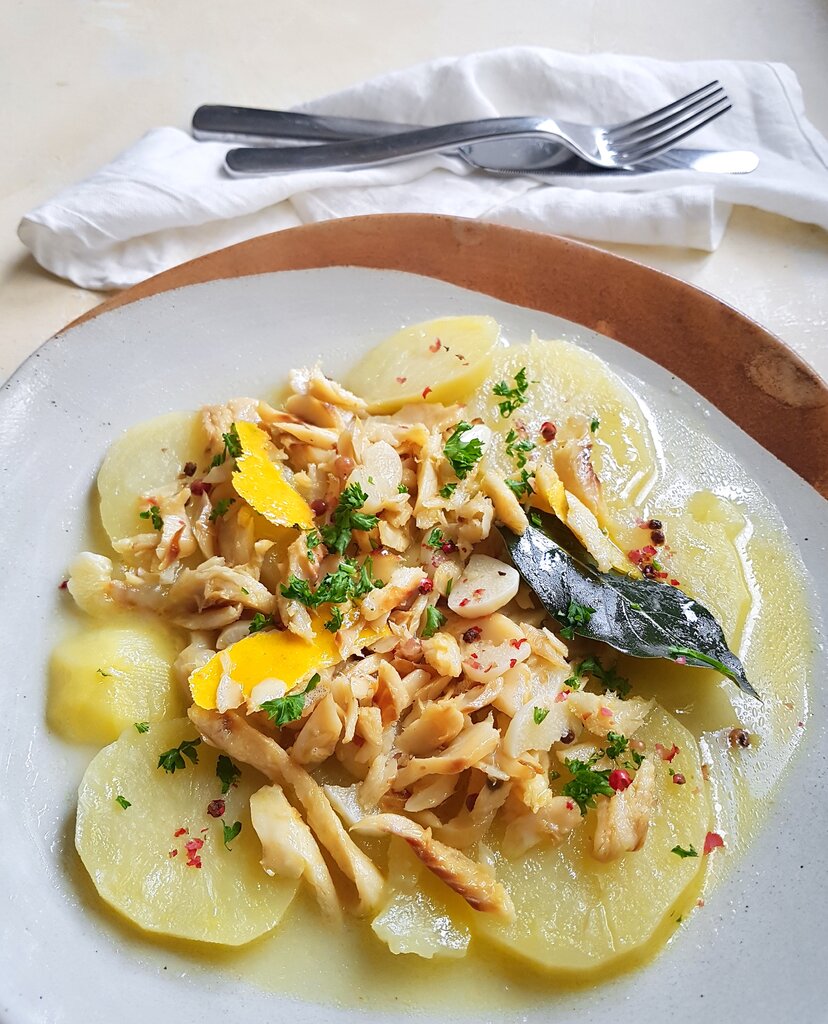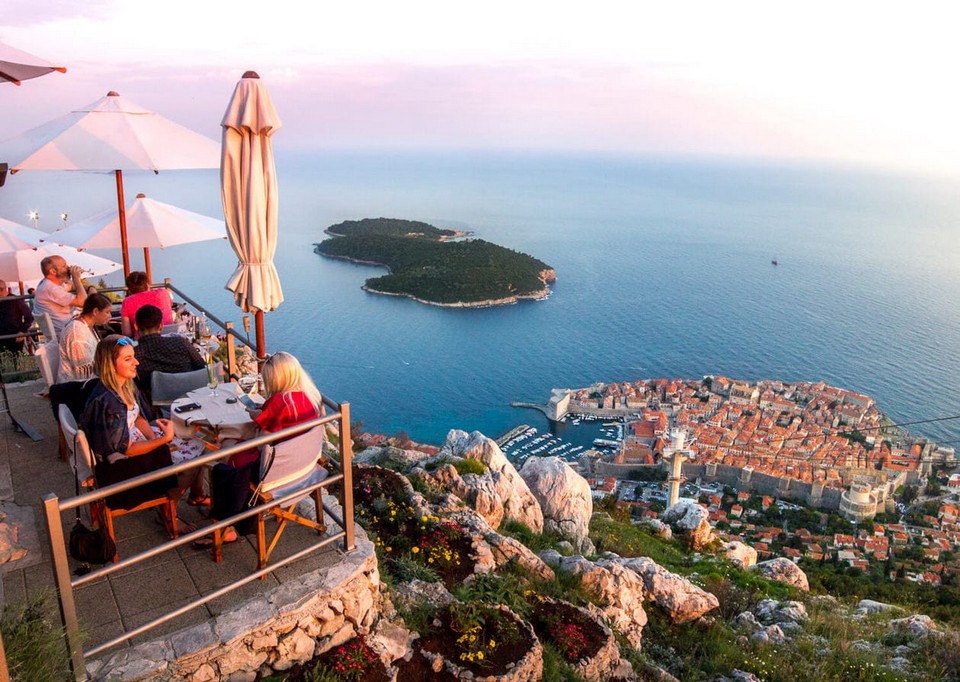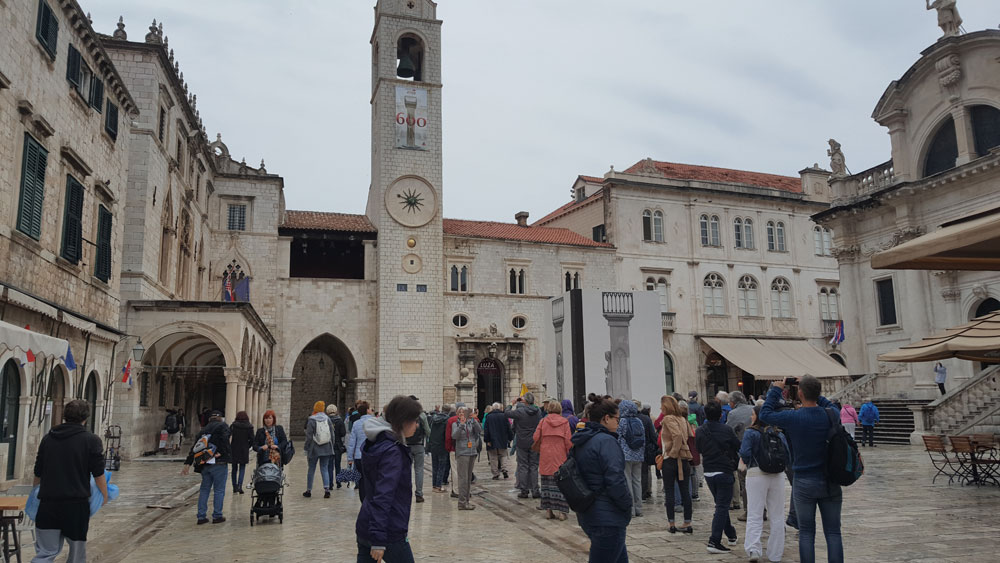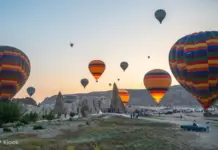Instead of setting foot in familiar destinations like France or Italy, I chose to travel to Croatia – a country whose name many people don’t even know where on the world map. It seems that among the countless famous tourist destinations in Europe, Croatia is still a raw gem that many visitor don’t know. But after trip I realized Croatia is a true tourist paradise. So, what to do and how to plan a perfect budget trip to Croatia for the first-time? Let’s check out our Croatia blog (Croatia travel blog) with the fullest Croatia travel guide (Croatia guide, Croatia tourist guide, Croatia visitor guide) from how to get there, best time to come, where to stay, best places to visit and top things to do to find out the answer!
- Taiwan itinerary 3 days — How to spend & what to do in Taiwan for 3 days perfectly?
- New Zealand travel blog — The fullest New Zealand travel guide for first-timers
- Japan itinerary 9 days — How to spend 9 days in Japan to visit: Osaka – Kobe – Kyoto – Nara?
- Luxembourg travel blog — The fullest Luxembourg guide for a great trip for first-timers
- Taiwan itinerary 6 days — The itinerary of a trip to Taipei – Hualien – Kaohsiung for 6 days 5 nights

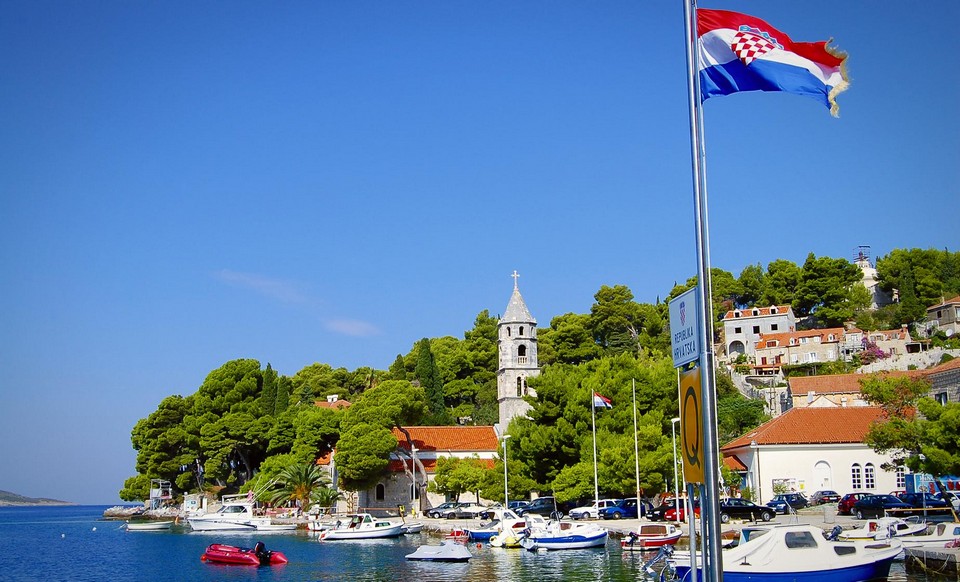
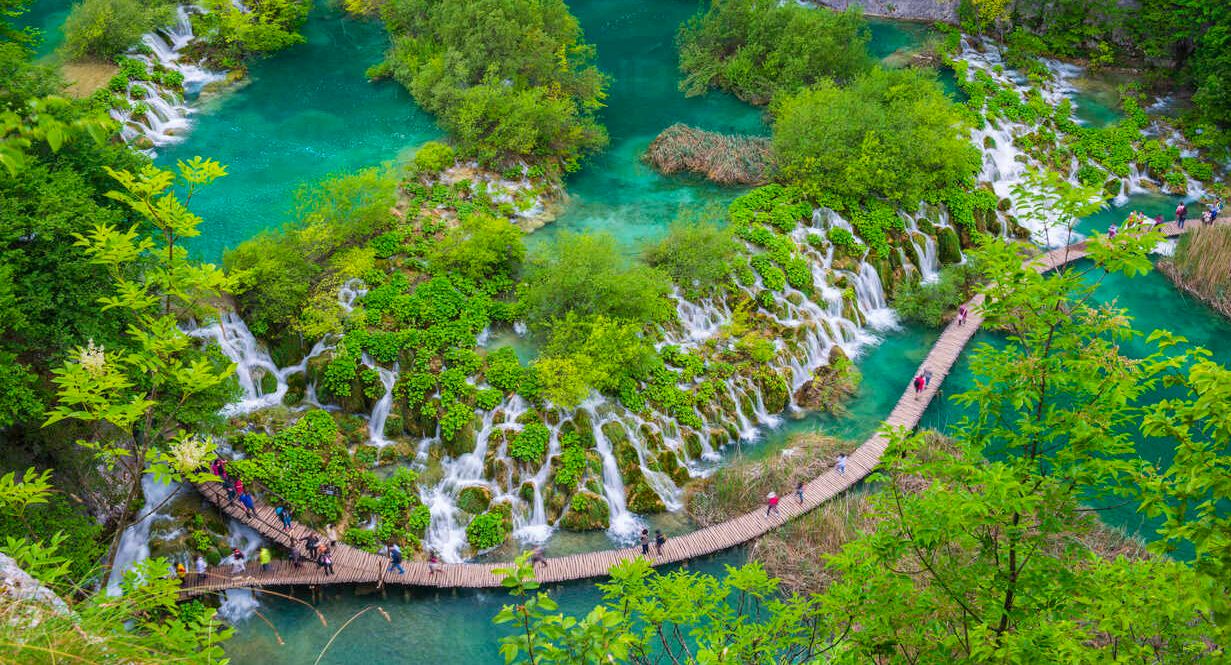
Located along the Adriatic coast, the small and beautiful country of Croatia, famous for its yachting industry, is gradually becoming a popular tourist destination because of its majestic scenery and long-standing culture. Coming here, you will be able to visit places such as the ancient and charming tourist city of Dubrovnik with the splendor of the fortresses built in the 8th century or Mljet one of the beautiful large islands off the Southern coast.
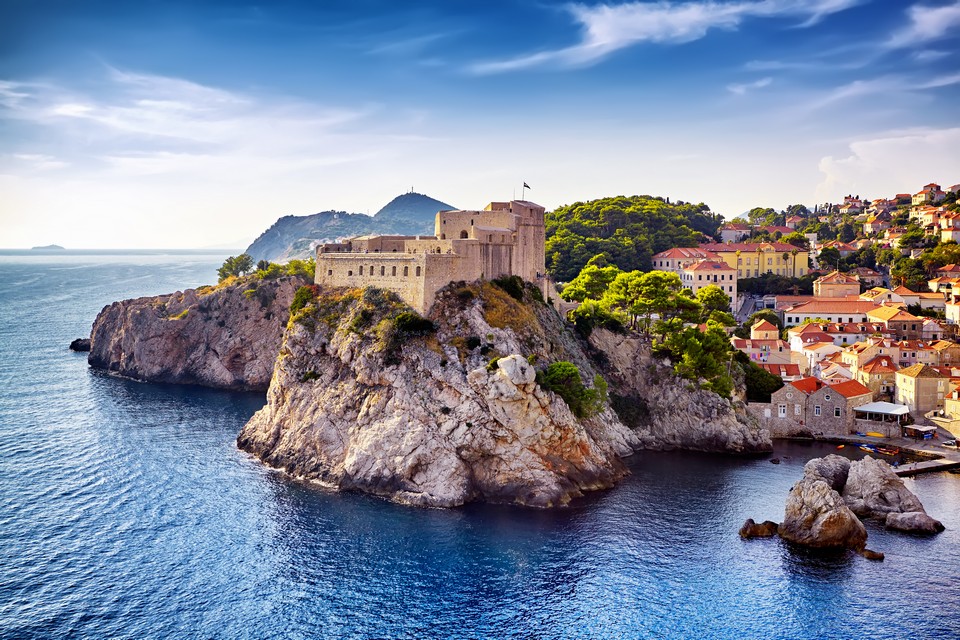
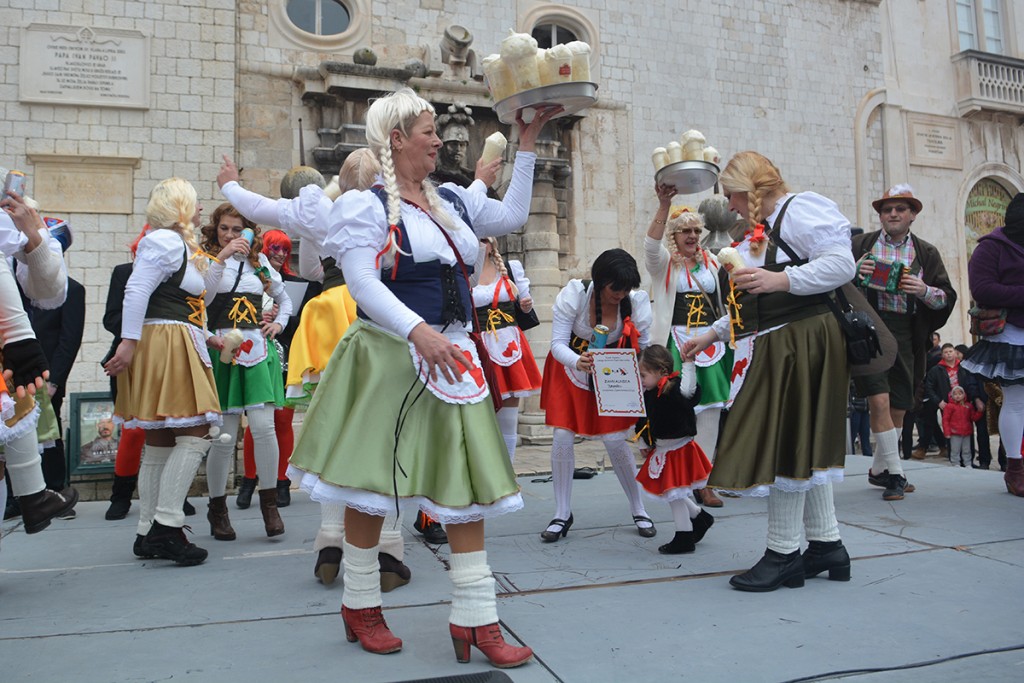
Croatia blog: Overview of Croatia
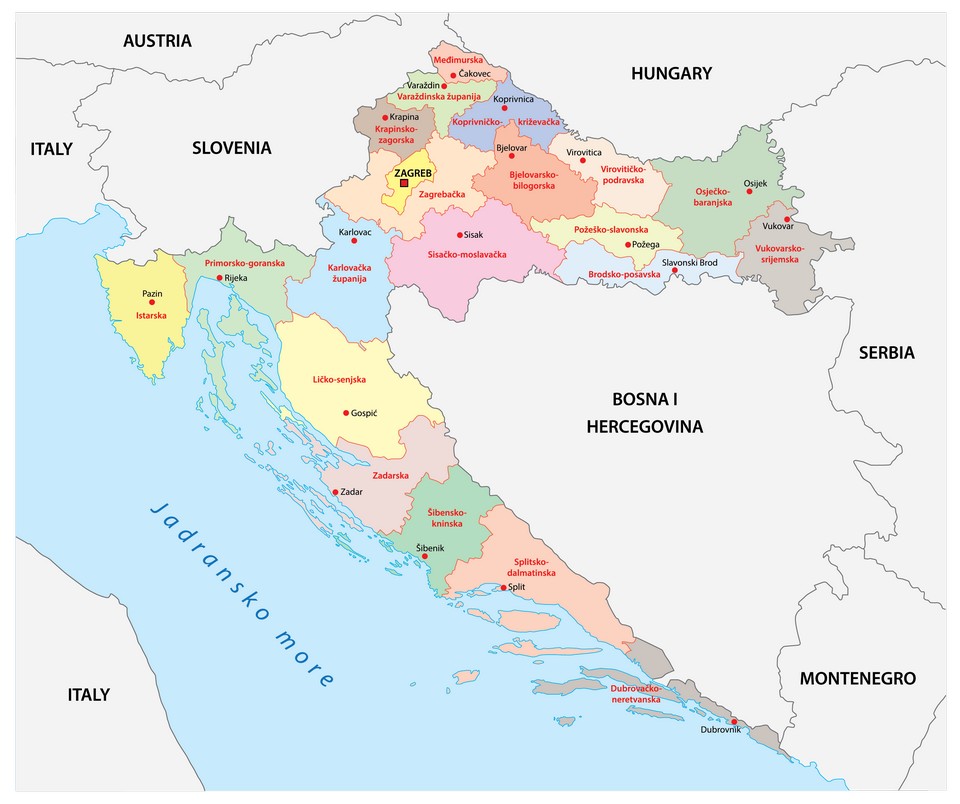
Croatia is bordered by Hungary to the northeast, Slovenia to the morthwest, Serbia to the east, Bosnia-Herzegovina, Montenegro to the south covering an area of 56,594 km² and a population of over 4 millions of people (2021). It is the home of the intersection of Eastern and Western Europe, this diversity expressed through its architecture, cuisine, art and literature. The Mediterranean influences from Greece and Italy are most noticeable in the coastal areas.
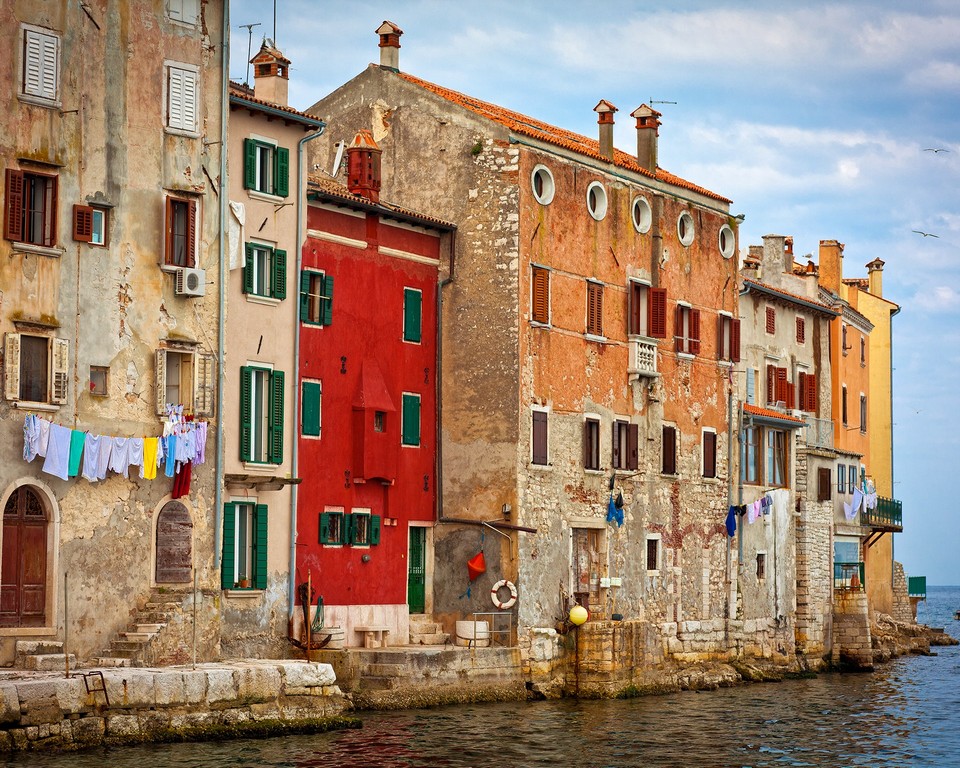
The Adriatic Coast is undoubtedly the most popular tourist destination in Croatia and a mecca for those looking for a holiday at Croatia’s paradise beaches and islands. It has the most concave coastline in Europe and boasts 1,185 islands and islets, of which only 66 are inhabited!
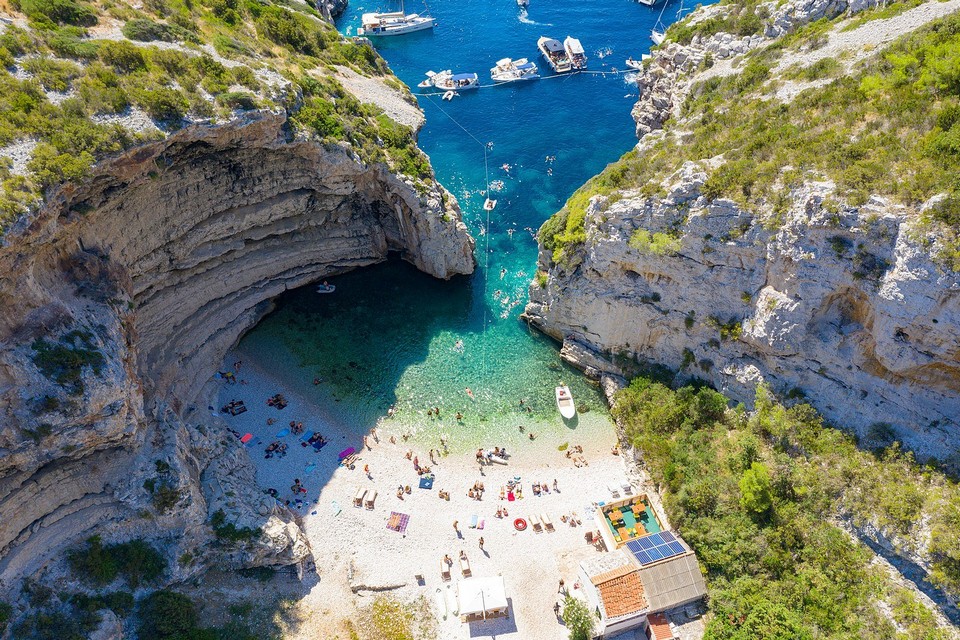
Croatia once rated as the 18th most popular tourist destination in the world – This vibrant, thriving country ranks highly among Central European countries for education, healthcare, quality of life and a dynamic economy.
Visa
Croatia is not a part of the Schengen area, but if you have a valid Schengen Multi Entry Visa (Visa type C) you can enter Croatia. Note that there is only Multi Entry visa, not Single Entry.
* If you have any doubts, you can email directly to the embassy and they will reply very quickly and enthusiastically (this is something I tried before I went).
Croatia blog: When to go?
When is the best time to visit Croatia? Croatia has mixed climate zones, with the north having a temperate climate while the central and mountainous regions have chilly air. Spring and autumn have gentle winds blowing along the coast. And winter in Croatia is very cold and snowy, especially in the central and northern regions.
The weather in Croatia is very diverse, when the North is characterized by a temperate zone, the midland and mountainous areas have a cold air. In particular, in the winter in this country is very cold and snowy, very suitable for those who love skiing, fishing on glaciers, …
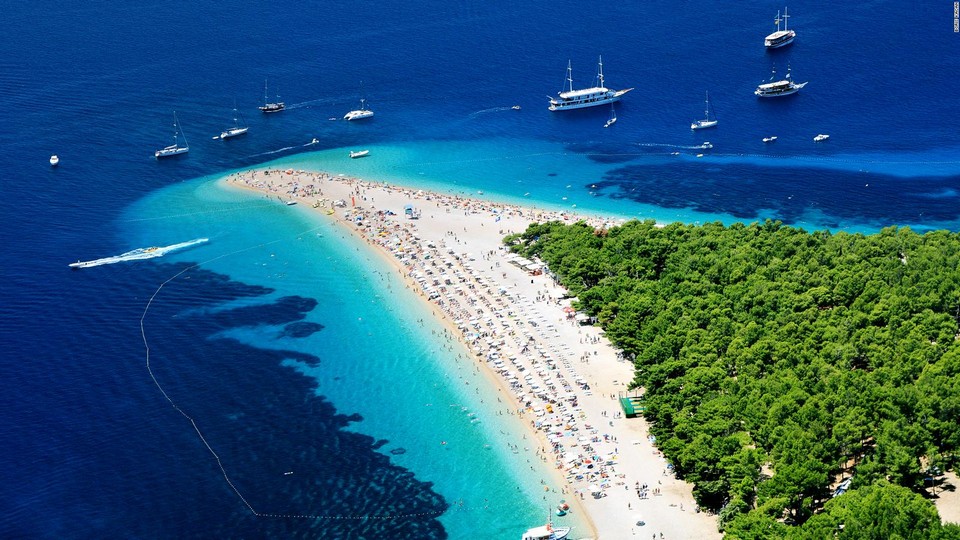
The period from February to May or from mid-July to the end of September is considered the best time to visit Croatia.
Croatia blog: Getting there and around
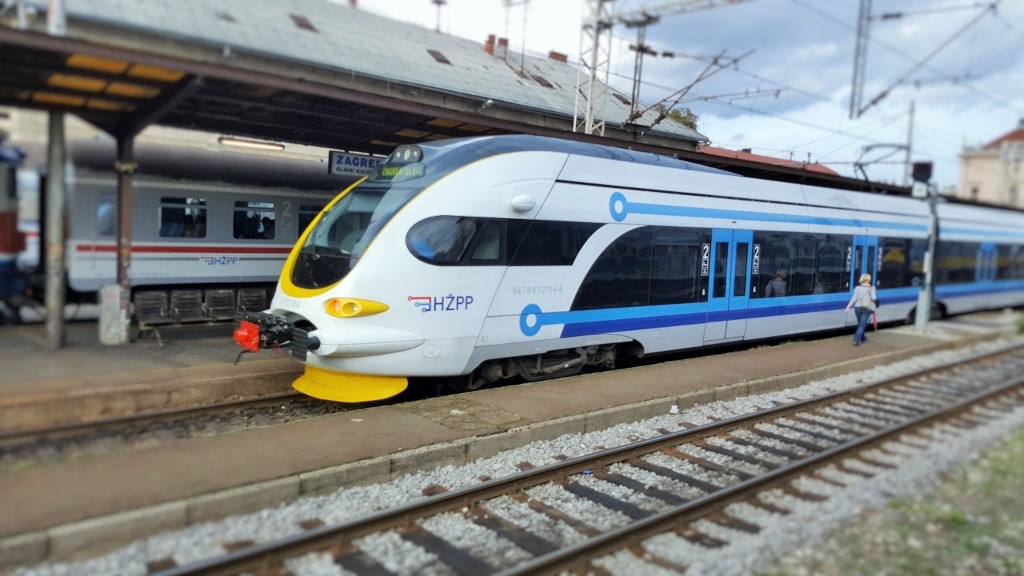
There are many ways to get to Croatia such as by ferry from Bari, Italy, by train from neighboring countries, by plane… We chose to take the train from Salzburg, Austria to Zagreb, Croatia (when the train stops at the border of Slovenia and Croatia, there will be customs to check passports.) The train takes 6 hours, you can choose the night train to sleep overnight to save money and have more time to exploring. Because we went to Plitvice the next day, we had to take the day train, in general, it was quite tiring, and there was no shops to buy foods on the train.
Although it is a direct train, but it will separate carriages in Villach, the upper half goes to Klagenfurt, Austria, the lower half goes to Zagreb, so please note that you should sit in the correct train car. Train fare for Salzburg – Zagreb route is €39/person.
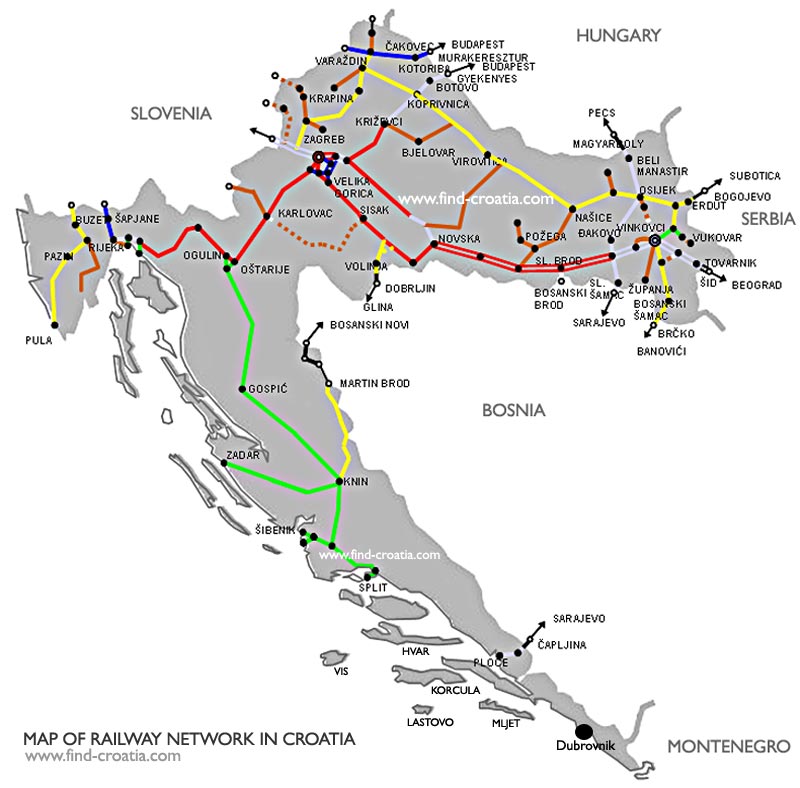
Getting around the capital of Zagreb
We only stayed in Zagreb for a while, so we mostly walking. The only way to go to Zagreb airport is by bus. The airport bus running from 4:30am to 9pm, every 30 minutes with a trip. One-way fare is 30 Kuna, but you can’t buy it online, you have to buy it at the ticket counters.
You can check ticket prices and timetables at the following link.
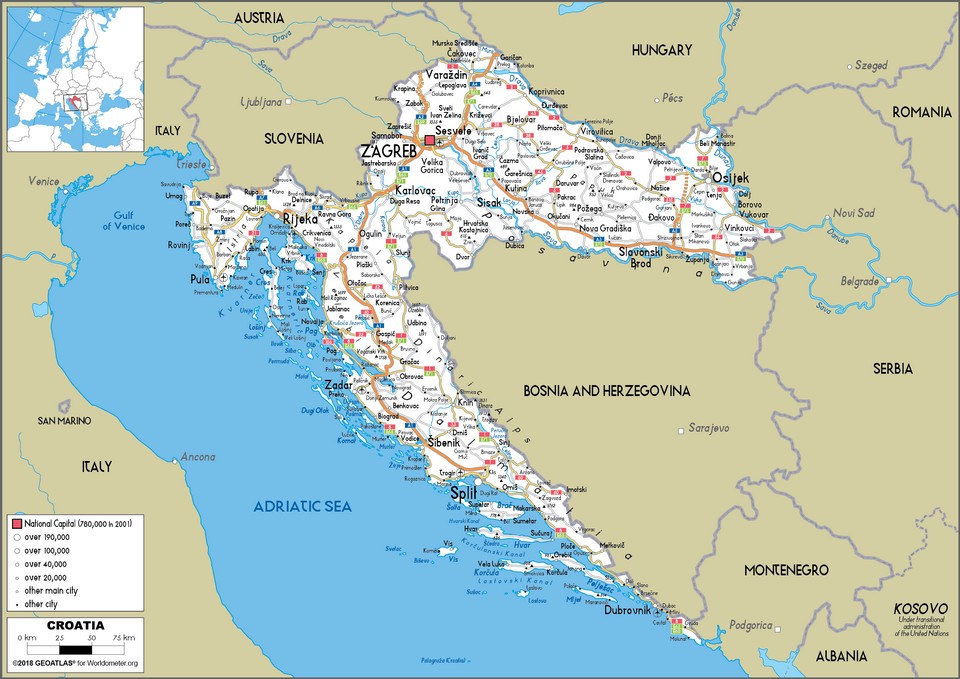
Zagreb – Plitvice Lakes National Park
You can go to Zagreb Main Bus Station to buy tickets at the counter or buy online. But I saw that there was a bus trip every 30 minutes, so you don’t have to buy it in advance.

It is recommended to buy a cheap 2-way ticket (cheaper 50 kuna) but the playing time is a bit short of 5 hours (due to the traveling time from Zagreb to Plitvice takes more than 2 hours already). This depends, but we saw 5 hours is enough to visit key attractions.
You can check ticket prices and running times at the following link.
Zagreb – Dubrovnik
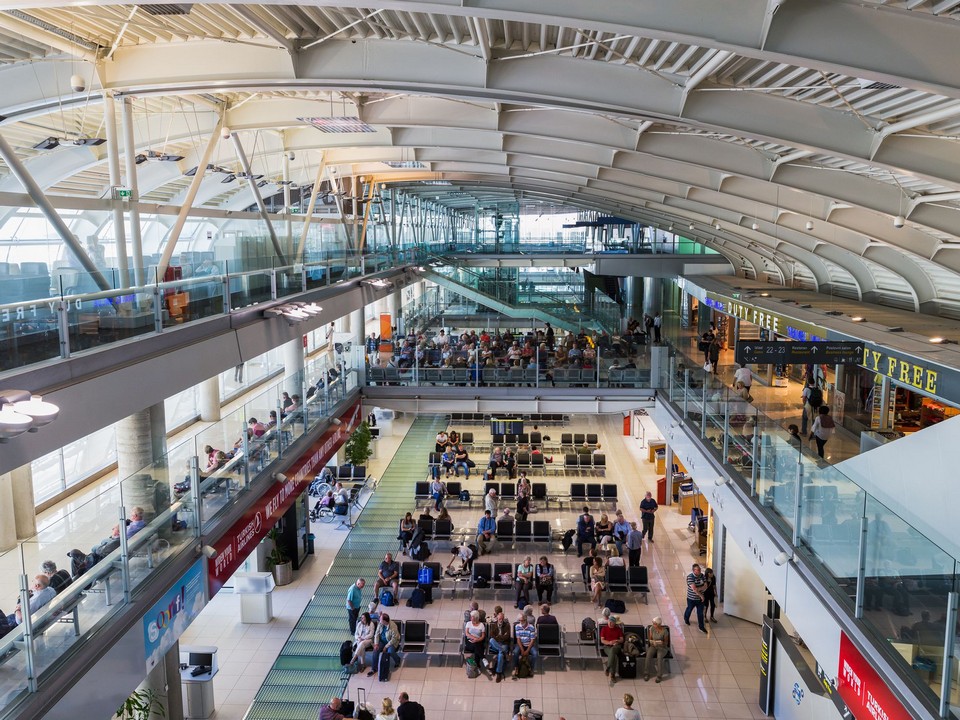
According to Google, you can get to Dubrovnik from Zagreb in two ways:
- Bus: also buy tickets at Zagreb main bus station, take 12 hours, cost 355 Kuna.
- Plane: Croatia Airlines, flight time 55 minutes, fare depends on time of flight.
At first, me and my sister planned to take the bus for cheap, but fortunately, we discovered that Croatia Airlines has a ticket price for people under 25 years old, only 80% of the regular fare. It also offered both night and early morning flights, the price is only about 405 Kuna, which is not very expensive, so we decided to fly.
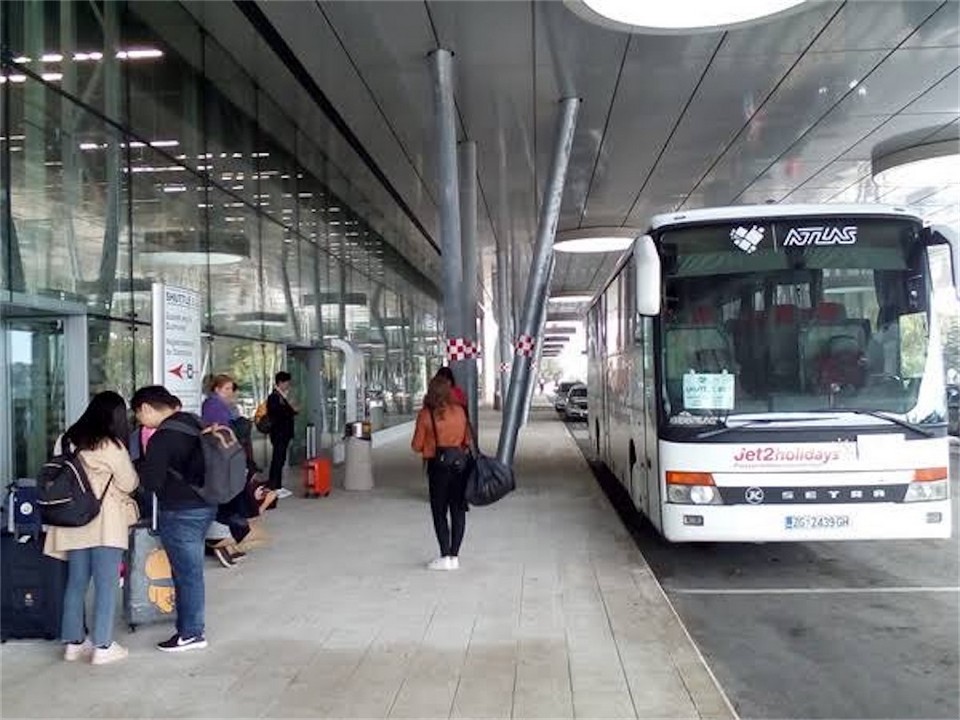
Getting around Dubrovnik
In the Old Town in Dubrovnik, all types of motor vehicles are prohibited and the roads here are full of steps, so you can only walk.
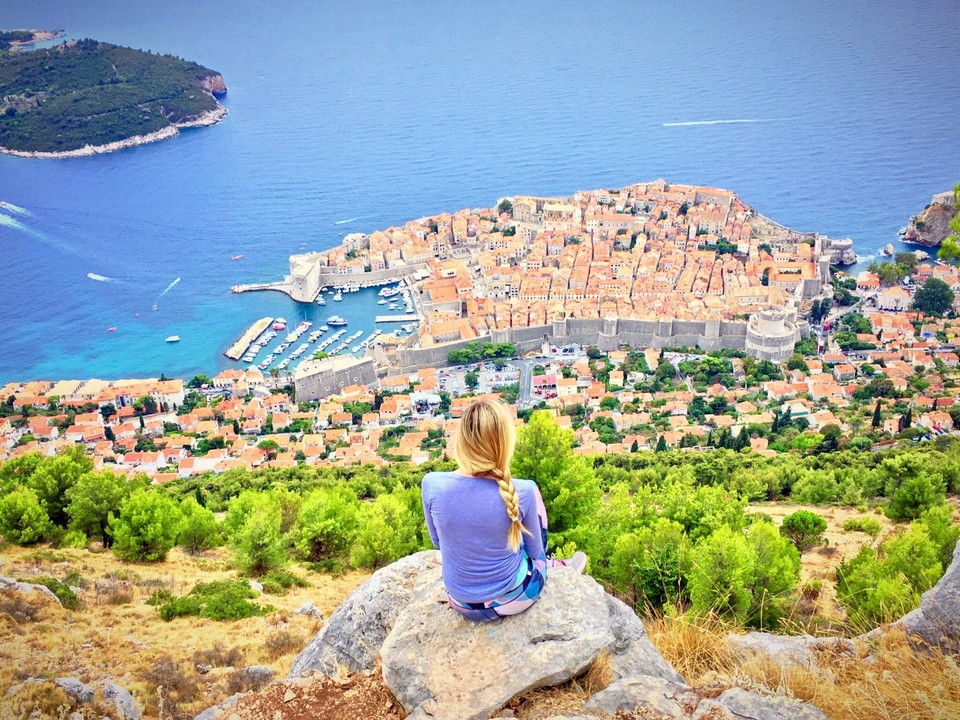
Before I went, I was also a bit nervous because If fly to Dubrovnik at midnight, afraid lack of vehicle to get to city center. So I just emailed to ask my hotel owner, and he said there is a bus operates 24/24 every time a flight lands. You just need to come out of the restricted area to see a ticket counter of Atlas company.
One-way ticket is 40 Kuna, if you buy a round trip ticket, you will only pay 70 Kuna, so I recommend buying a round-trip ticket combo for convenience. Information about this bus route can be found on the following page.
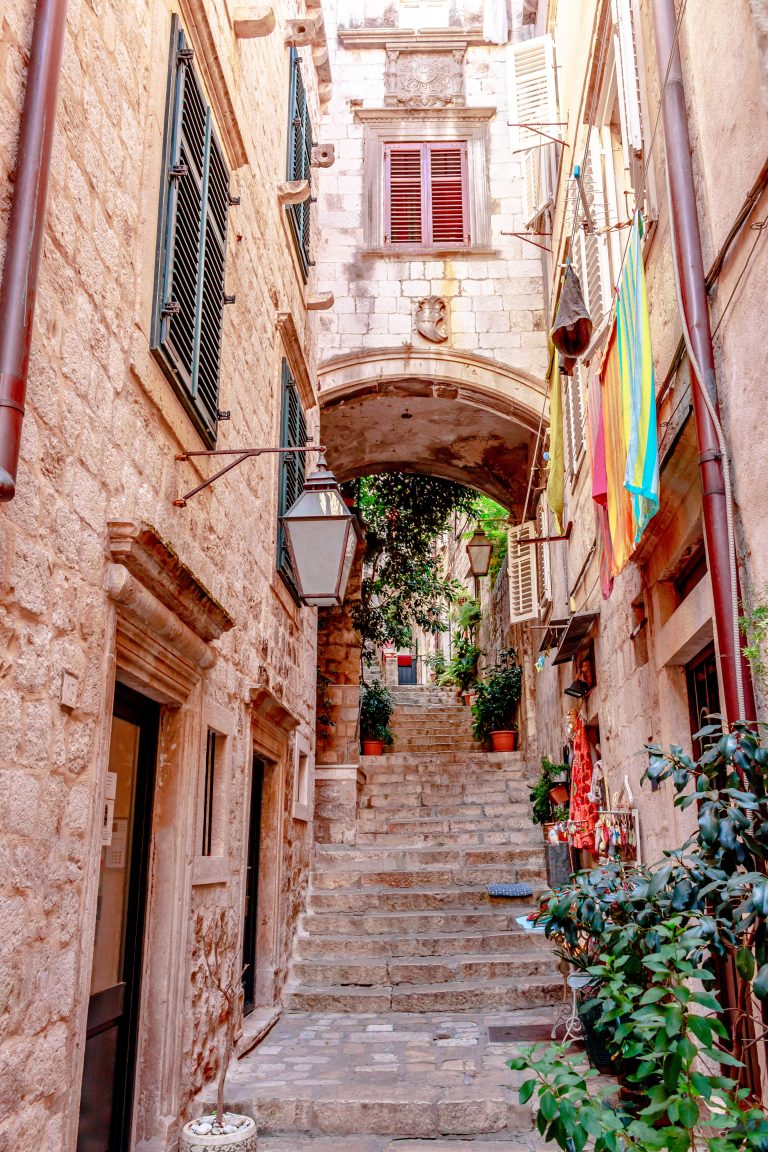
Cruise
You can also enjoy the beauty of Croatia by cruise. Croatia has many islands, so choosing to travel by cruise or ferry is both comfortable and exploring many points. Every day the cruise will dock for you to visit the city or other destinations on the shore in Croatia.

Self-driving
If you have an international driver’s license, you can rent a private car. This helps you not have to depend on the timetable of the bus and go faster and more convenient. Car rental is about 35-40 euros/day, of course you must know how to drive and show your international driver’s license and a deposit.
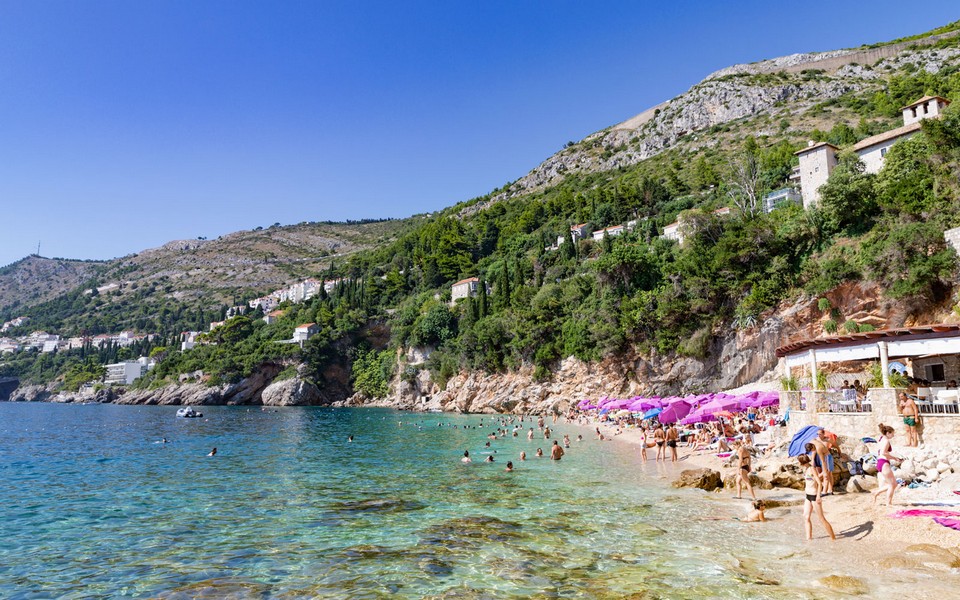
Croatia blog: Where to go?
Zagreb
Zagreb has all the essentials of a capital city: Pedestrian streets, museums, galleries, open-air cafes and a quaint downtown in the center city. However, do not miss the Dolac Market, the colorful St Mark’s Church or the Museum of Broken Relationships.
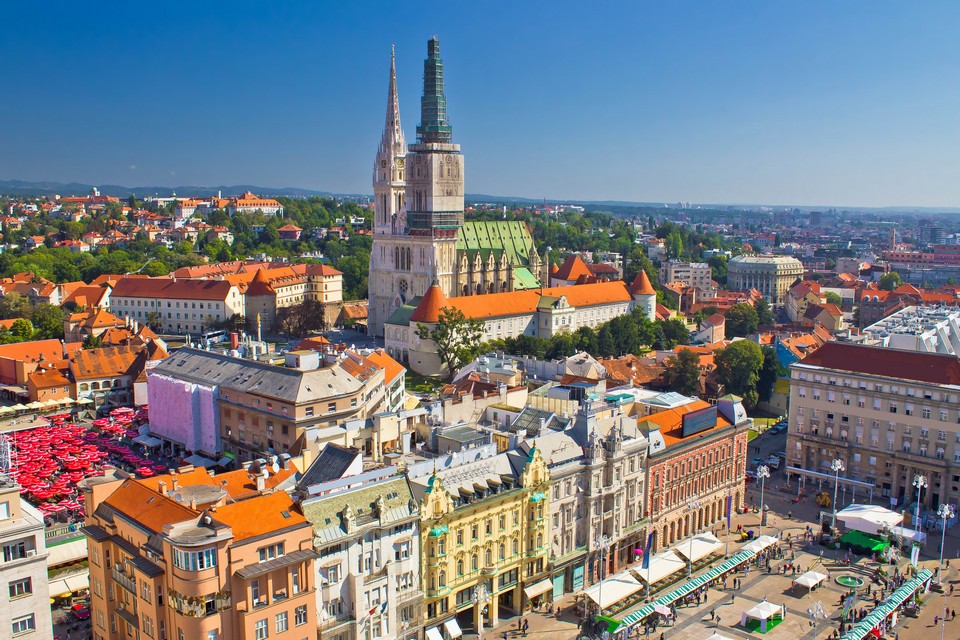
Gornji Grad (Upper Town)
Gorniji will be introduced first by guides when traveling to Croatia because it is located in the heart of Zagreb. This district has a large square, surrounded by St Mark’s Church – the parish church, the spiritual place of the Croatian people. Tourists often gather here quite a lot, because they want to learn about the culture, beliefs and lifestyle of the local people.
Zadar
This is not a very famous Croatian destination (compared to Split or Dubrovnik) but I really like this beautiful little city. Also because it is quite small, it only takes about 1 day or even half a day to explore Zadar. Just hang around in Zadar’s Old Town and walk along the beach leading to the Sea Organ, sit and watch the sunset in special music created by waves crashing against specially built rocks to create sound, then walk out to Greetings to the Sun to enjoy an interesting light party when it is completely dark, it is enough to fully feel Zadar.
Personally, I find the sunset in Zadar even more beautiful than in Santorini I watched last summer. Maybe I was lucky to come on the day the sun set was so beautiful, but anyway, I highly recommend that you try this extremely interesting experience once.
Split
Split is the second largest city in Croatia, also a popular destination for beach lovers. Like Zadar, Split has a very lovely old town with Let Me Pass street known as the narrowest street in the world. After visiting the old town, you can walk out to Riva – a coastal road with 2 soaring rows of coconut trees and stalls selling colorful handmade items. I still remember the feeling of walking along this road in the smell of the salty sea, the gentle breeze and gazing at the Mediterranean landscape with the blue sea in golden sunlight and the mountains looming in the distance. In addition, you can also climb up to Vidilica cafe on Marjan hill for a panoramic view of the city.
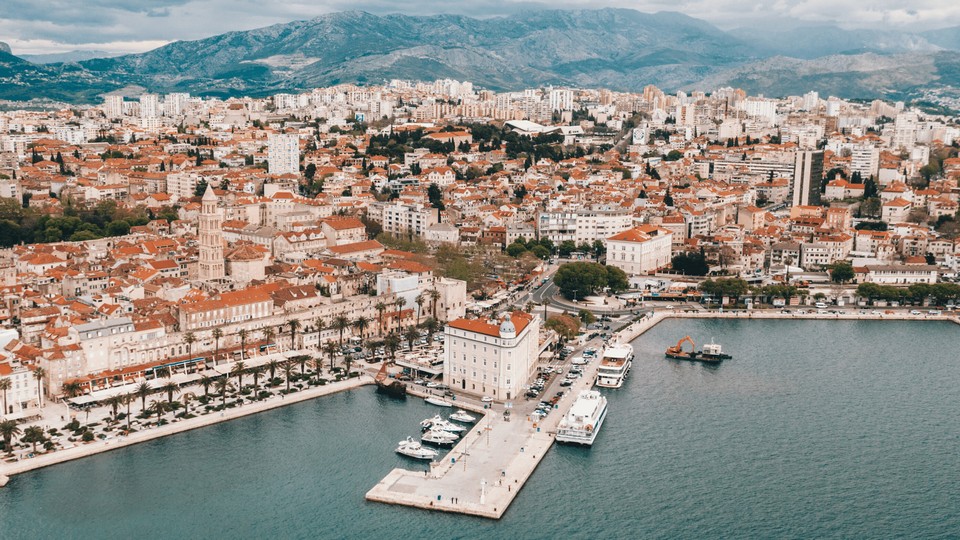
But Split isn’t just that. Another reason make Split is famous is because it is surrounded by many lovely islands like Hvar or Brac. In particular, the Zlatni Rat beach near Bol on the island of Brac is the place that often appears on Croatian postcards. There are daily ferrie from Split to these islands, so it is very convenient to travel, even in the peak summer season you can combine to visiting 2 islands in the same day because the ferry runs continuously.
Trogir
The historic town of Trogir and the harbor located in the south of Croatia next to the city of Split is an attractive destination. It was recognized as a UNESCO world cultural heritage site in 1997 and it has many valuable historic buildings. Trogir is very special thanks to the architecture. The old city surrounded by walls is filled with churches, castles, houses and palaces from different periods including everything from Roman to Baroque style.
Pula
A coastal town with a rich Roman architectural system, typically the Pula Arena. Built between 27 BC and 68 AD, this arena was also used to host concerts or large events. If you are not a history buff, rest assured that the poetic scenes here are enough to please anyone.

Euphrasian Basilica
Euphrasian Basilica bearing bold with the ancient Byzantine architecture of the Mediterranean. It can be said that the government and people have extremely preserved this sacred place to keep its original shape, even though it has undergone many events such as fires and earthquakes. Stepping into the cathedral, visitors will be really surprised by the unique design and shape. The pillars of the Basilica were built solidly and firmly to support the whole cathedral. Finely carved details, harmoniously coordinated colors create a masterpiece of art.
Plitvice Lakes National Park
Plitvice Lakes National Park is a UNESCO World Heritage Site with turquoise lakes, limestone canyons and hundreds of waterfalls. Plitvice is the largest national park in Croatia with a special topography of mountain lakes. It is also because of this special terrain that the natural scenery here is majestic and enchanting. It is not suprise that people call this Paradise on Earth for nature lovers.
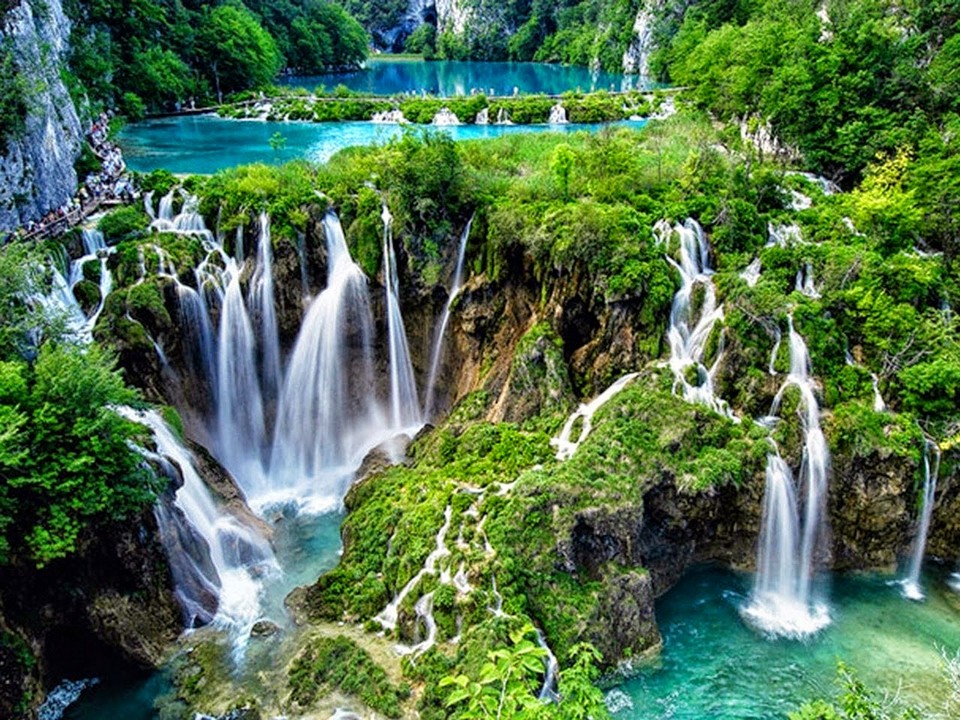
To get to Plitvice, the closest and fastest way is from Zadar. That’s why I chose to fly to Zadar first. However, from the capital Zagreb or Split, there are also direct buses to Plitvice, so you can rest assured that it is very convenient to getting here.
Hvar Island
This is one of the most famous islands of Croatia. Hvar is home to many sunny beaches, lavender fields and lush vineyards. In addition, the site also has a poetic city center with Gothic palaces or marble streets. A potential Croatian tourist destination.
Dubrovnik
Croatia’s most famous tourist city, which was chosen as the setting for the movie Games of Thrones. Although not as famous as Venice or Amalfi, Dubrovnik is a destination not to be missed when coming to the Mediterranean. If you has been to Santorini and loves the unique architecture with two colors of white and blue. Then in Dubrovnik you also can find a brilliant beauty of white walls and orange-red tile roofs of ancient houses lying close together. Dubrovnik is super easy to visit as its most famous and most beautiful places are the Old Town and the city walls.
Korcula
This is a very charming destination, like a miniature version of Dubrovnik. An island owns dense forests. The name given to the island was originally Korkyra Melaina (Black Korcula) with its coves and rolling hills. Korcula is definitely a highlight of any trip to Croatia giving you the opportunity to indulge yourself in the sea and sunbathe on the beaches. It is also home to some of Croatia’s best wines and local olive oils.
Mljet Island
As an island off the coast of South Croatia, most of the island area is green forest, creating a fresh atmosphere. The rest of the island is fields, vineyards and small villages scattered like a poetic, peaceful picture. Renting a bike to explore the pine forest, boating on one of the tranquil lakes and shopping in the small but well-stocked supermarket will keep you busy and excited during your trip to Mljet.
Makarska
This cosmopolitan seaside town offers tourists the best: Enjoy sunny beaches and cool seawater, with bustling streets, exciting tourist attractions vibrant nightlife just a few kilometers away. Makarska also has a very special Malacological museum in the basement where you will see a large collection of fossils, snails, seashells and other interesting historical objects!
Sipan
This is a Croatia tourist spot you should set foot in and soak up the vibe atmosphere with a glass of Shiraz in hand. If you want to explore more, renting a bike is an easy and fun way to see the stunning island.
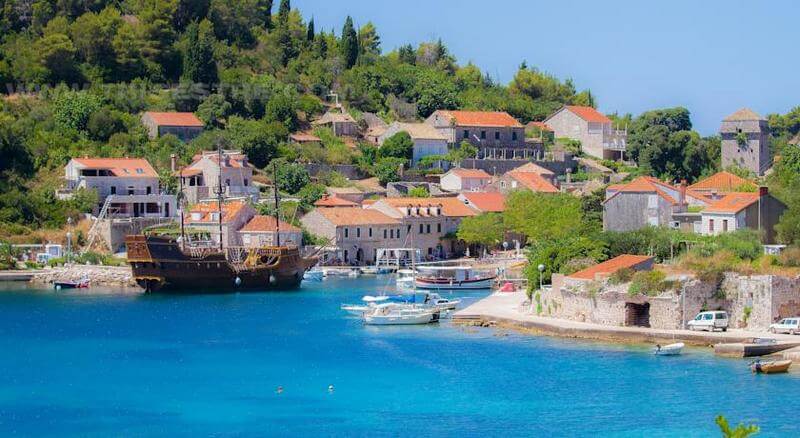
Sipan is a popular day trip destination, especially as you’re likely to encounter companions during your stay. A trip around the island will allow you to see the Gothic Rector’s palace, palace ruins and the iconic 16th-century castle that surrounds the peaceful village of Suđurađ…
Trstenik
A very small town located on the Pelješac peninsula. Trstenik is a great place to soaking up in the sunlight and enjoy the clear blue beach. If you prefer to stay on the go, you can visit the town’s winery or enjoy some delicious food at one of the roadside restaurants. With a population of just 116, this town is remote and quaint, and it’s great for a night away from the hustle and bustle of the city.
Pakleni Islands
Near Hvar island, the Pakleni islands attracts many tourists to its beautiful coastline. In contrast to the bustling town of Hvar, you’ll find quiet, secluded beaches and natural wonders on the many islands that make up the Pakleni archipelago. From an island of Jerolim you can visit the diving paradise off the island of Stambedar, which will give you exciting underwater adventures.
Brač
Brač owns one of the most famous beaches on the Dalmatian coast. Brač offers great relaxation on white pebble beaches. It’s also a great place to hike for breathtaking views at the highest peak on the Adriatic Islands, Vidova Gora peak, stands the tallest in this tiny town.
Day trip
In addition above attractions, you can buy tours to neighboring countries to play such as Montenego, Bosnia & Herzegovina. Prices range from €40 – €50 for a full-day tour. We didn’t have much time, so we have to miss these points.
Croatia blog: What to eat?
Croatian cuisine is a blend of long-standing traditions with Italian, Turkish, and Hungarian flavors. Thanks to its long coastline, Croatian cuisine is famous and diverse with seafood dishes. The culinary characteristics of this Mediterranean country is delicious grilled dishes and hot stews.
Personally for me, I found the food in Croatia is very fresh, not industrialized like food in European countries. In addition, the dishes are processed and well-seasoned, not bland like Hungarian food or Austrian food.
Salata od Hobotnice (Octopus Salad)
This dish made from fresh octopus, served with potatoes, chopped parsley, minced garlic, lime juice and a little black risotto made from cuttlefish and cook with cuttlefish broth. This is a traditional dish in restaurants in Croatia.
Peka
This dish made by a method uses a bell-shaped terracotta swing that is heated by burning charcoal at the bottom. When it is hot, the food will be put into cooking in a round tray, turn the hot pot over and then cover the embers on the bell-shaped pot. Peka is made from a variety of ingredients such as meats, seafood with seasonal vegetables, in which always has potatoes.
Brodet
Brodet (stewed seafood with vegetables): This is a dish widely sold in restaurants and eateries in Croatia. The ingredients as well as the way to prepare this dish are very simple. Chefs use 3 types of fish and a few types of shellfish such as clams, mussles, oysters, crabs… stewed with vegetables, seasoned with traditional spices for 50-60 minutes to mix the ingredients together, creating a rich broth. It is served with bread to reduce the greasy taste of the dish.
Bakalar (salted cod and mashed potatoes)
if you go to Croatia on Christmas and New Year days, you will find Balakar appearing in almost every meal from restaurants to local homes. The main ingredient for this dish is cod. Fish before being processed will be soaked in cold water for about 3 days to melt the ice and reduce its salinity. Potatoes are mashed. In the cooking process, add a little olive oil, chopped parsley, minced garlic. This is one of the delicious dishes in Croatia you should try.
Pašticada (stewed beef)
Stewed beef with special sauce is a famous dish in Dalmatia, it requires a long and meticulous processing process. Premium beef marinated with lots of spices and a variety of vegetables then left overnight to infuse then cooked with grilled bacon, coriander root, onion, nutmeg, tomato paste, prunes and stewed up to 5 hours, depending on the type of meat. The dish is often served on important occasions such as weddings, it is served with gnocchi or pasta.
Other must-try dishes include:
- Soparnik – vegetarian pancake
- Risotto – mixed rice with stewed meat
- Black risotto
- Gulaš – stewed beef soup
- Zagrebački odrezak – veal steak stuffed with ham
- Malvazija & Teran – 2 favorite Croatian wines
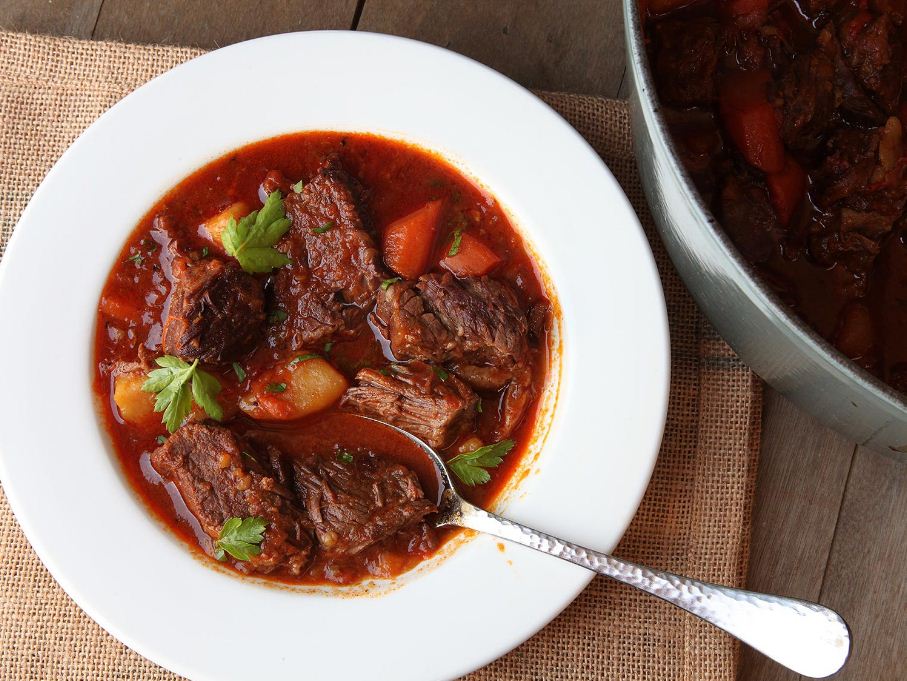
The country is also a major wine producer, with the Peljesac peninsula famous for its red wines, and eastern Slavonia and Istria known for its white wines.
In terms of drinks, you can enjoy Italian-style kava (also known as milk coffee). In addition, pivo and white wine, red wine are also great drinks you should not miss when visiting this country.
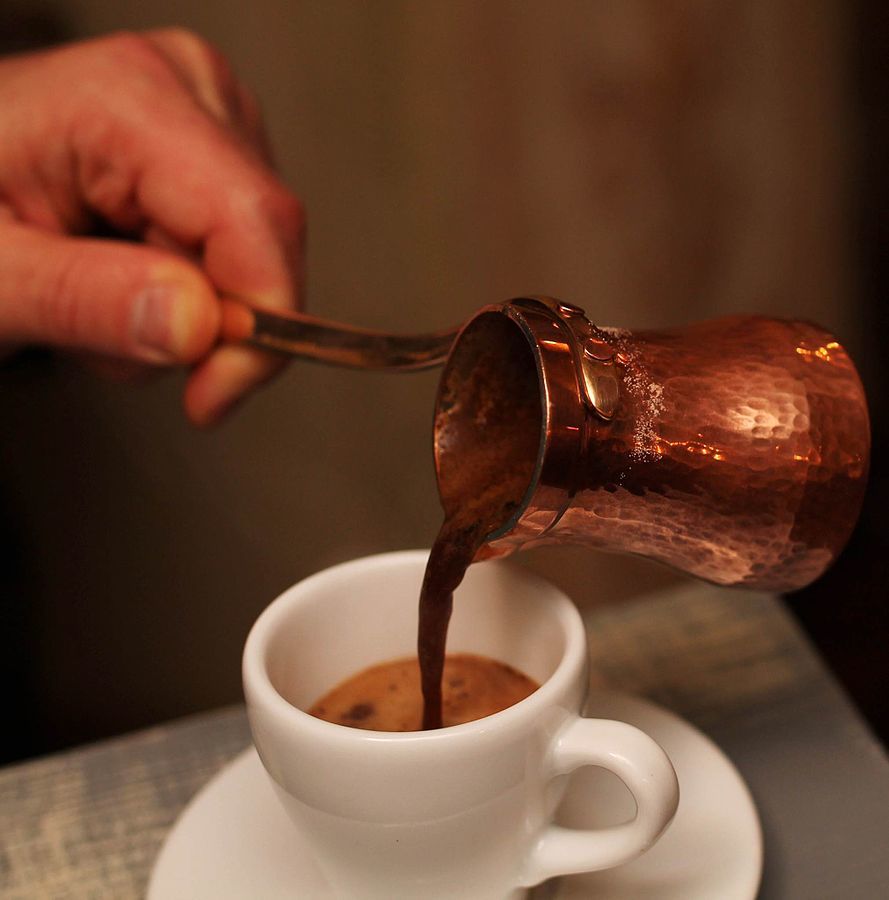
In addition, I would also like to suggest some good restaurants in Croatia:
- Zagreb: Batak Grill Cvjetni, Boban, Vinodol, Rougemarin City, Mundoaka Street Food.
- Dubrovnik: Nautika, Above 5 Rooftop, Trattoria Capriccio, Panorama, Revelin
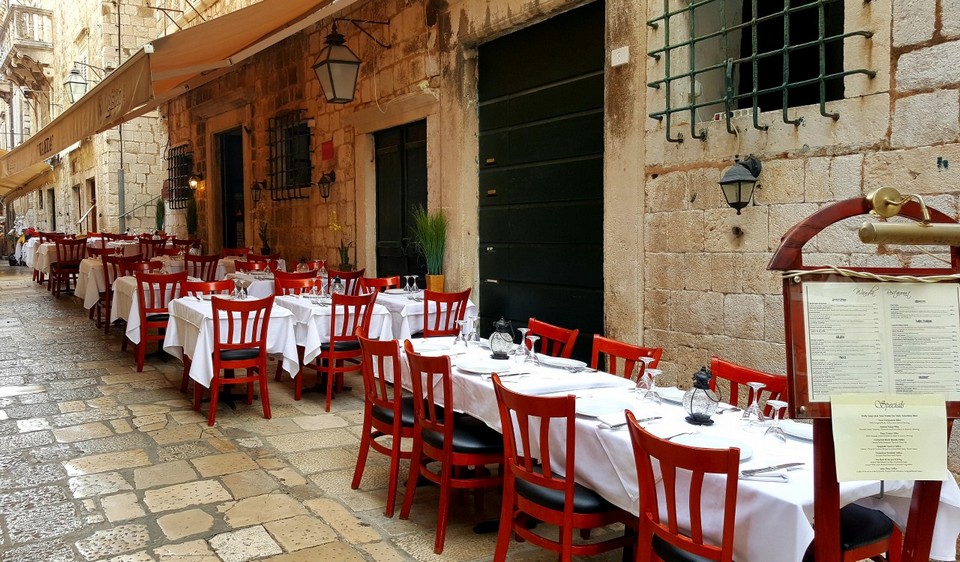
Croatia travel blog: Where to stay?
Zagreb: Because we only stayed for one night, we booked the one near the train station and central bus station. HI Hostel Zagreb (Agoda.com or Booking.com) has a private room for 2 people, but the price is cheap 15 € / room, with deposit luggage service after check out. However, the rooms here looks a bit old and the facilities are quite rundown.
Dubrovnik: We rent a room on Airbnb, 5 minutes walk from Old Town but good, cheap, the owner is super nice and even lets us send our belongings for 8 hours after checking out.
If you have good financial conditions, you should stay in Old Town to feel lifestlye and local life here, although the roads are steep with many stairs and most importantly, the price is super expensive.
Although we visited Dubrovnik in not the tourist season, the average price for an apartment here is already $60. There is a good hostel called Angelina Old Town (Agoda.com or Booking.com) but the price is also similar.
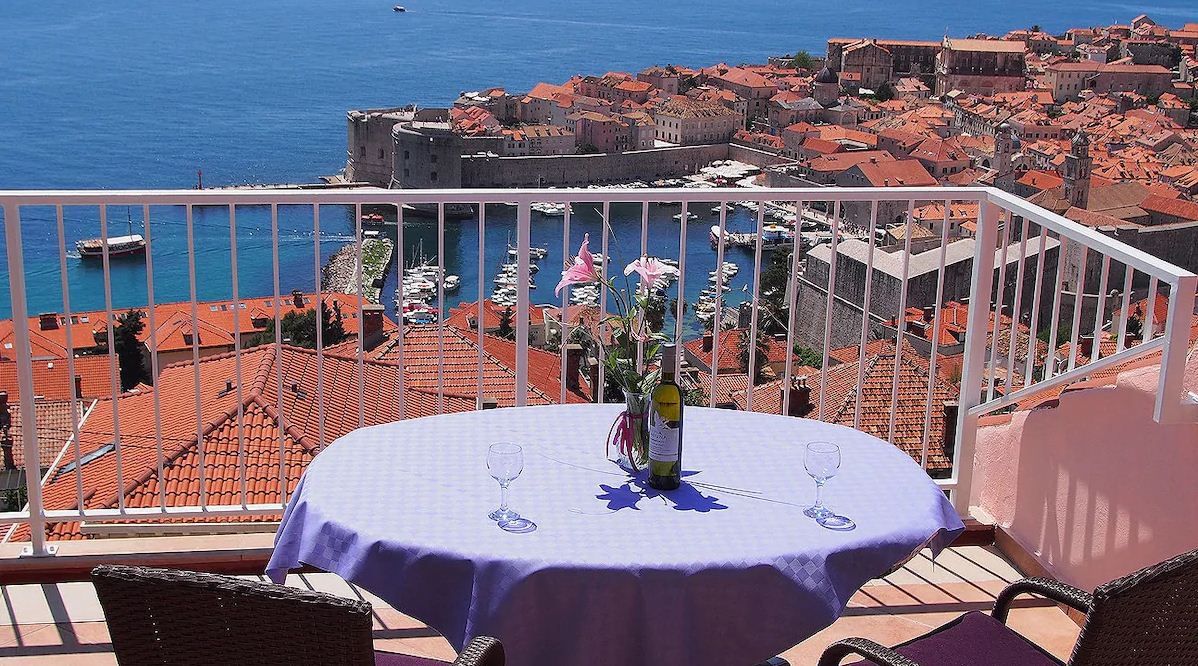
Checkout more top rated and best hotels in Croatia on Agoda.com, Booking.com.
Croatia travel blog: Shopping
You can buy items such as traditional handicrafts, jewelry, glassware, wood carvings, lavender bags or local specialties, wines, and olive oil as gifts for your loved ones, friends after the trip to Croatia. Most of the above items are sold in shops in Zagreb. But you should buy souvenirs at traditional fairs or festivals to save a lot of money.
Croatia blog: Travel costs
Most transactions in Croatia in Kuna, EUR 1 ~ 7.5 Kuna. In some tourist destinations like Dubrovnik, there are still some places that accept € . We exchanged money at home, so we didn’t exchange it here.
In general, travel costs in Croatia are cheaper than in some other European countries. Only in Dubrovnik, the cost is a little more expensive. You can refer to the total cost of traveling to Croatia for 4D3N as follows (price will be for 1 person and Kuna currency):
Accommodations
- Zagreb (1 night): 100 Kuna
- Dubrovnik (2 nights): 428 Kuna
Traveling
- Salzburg – Zagreb train(1 way): 289 Kuna
- Zagreb – Plitvice bus (2 ways): 158 Kuna
- Zagreb – Zagreb Aiport Bus (1 way): 30 Kuna
- Dubrovnik Airport – Dubrovnik Old Town Bus (2 ways): 70 Kuna
- Zagreb – Dubrovnik flight (1 way): 395 Kuna
- Dubrovnik – London flight (1 way): 352 Kuna
Admissions
- Plitvice Lakes National Park: 80 Kuna
- Dubrovnik Walls: 150 Kuna
- Mt.Srđ cable car: 130 Kuna
- Dubrovnik boat tour: 75 Kuna
Eating
Depending on your budget and preferences, you can choose the food and restaurant suitable for your budget. My one meal ranges from 75 – 175 Kuna.
Croatia travel blog: My Croatia travel itinerary 4 days 3 nights
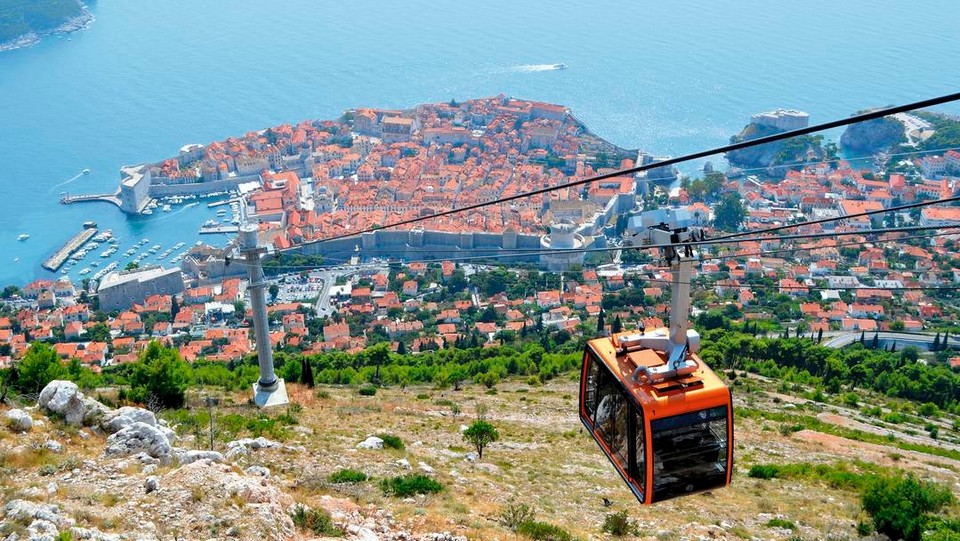
Day 1
– 14:12 – 20:53: Take the train from Salzburg to Zagreb
– 21:15: Check in hostel
– 21:40: Visit the city center and have dinner at Mundoaka Street Food restaurant
– 23:00: Return to the hostel to resting
Day 2
– 07:30: Check-out and send luggage off at the hostel
– 08:30 – 11:07: Take the bus to Plitvice
– 11:15: Lunch
– 11:45 – 16:15: Visit Plitvice Lakes
– 16:45 – 19:00: Take the bus back to Zagreb
– 19:30: Go back to the hostel to take luggage + buy snacks
– 20:00: Take the bus to Zagreb Airport
– 22:05 – 23:00: Fly to Dubrovnik
– 23:30: Take the bus to Dubrovnik Old Town
– 23:55: Check in the apartment
Day 3
– 09:00 – 12:00: Strolling around Dubrovnik Old Town
– 13:30: Lunch + return to the apartment to rest
– 15:30 – 18:00: Visit Dubrovnik Walls
– 18:45 – 21:00: Night walking in Dubrovnik Old Town
– 21:30: Dinner
Day 4
– 08:30: Check out and send luggage at the apartment
– 09:30 – 11:00: Visit Lovrijenac fortress
– 11:30: Lunch
– 12:00 – 14:00: Walk around Dubrovnik Old Town
– 14:30: Take a boat tour
– 15:30: Visit Hotel Belvedere
– 16:00: Swimming in Sveti Jakov sea
– 17:00: Return to Dubrovnik Old Town
– 17:45: Dinner
– 19:00: Go back to the hostel to take luggage
– 20:00: Take the bus to the airport
– 22:30 – 00:05: Fly back to UK
Croatia blog: Before you go
- Currency: Croatia uses the Kuna, abbreviated as KN, 1 euro for 7.5 kuna. Withdrawal rates from Croatian ATMs are very high, sometimes a fee of 10-13% is deducted. Therefore, you should use cash in euros and then exchange to kuna or use a card when make payments. When staying in a hotel or eating in a restaurant, if the staff asks if you want to swipe a card to charge in Kuna or Euro, it is more beneficial to charge in kuna.
- Language: Croatians can speak many languages, such as Croatian, Italian, and English as their mother tongues. Many people speak multiple languages fluently.
- Shopping: When buying at the flea market, you should bargain. If shopping in shopping malls, you should ask the seller for an invoice and should check cash back or card balance.
- Safety: Croatia is a safe country for travelers. However, the friendliness of the people on the street cannot be called perfect. During my travels to many cities in Croatia, I have noticed that the more touristy a place is, the less friendly it is, the bus driver is sometimes very rude.
Some best day tours, trips, activities and transfer services, tickets in, from and to Dubrovnik you can refer to
- Sunset Kayaking Experience in Dubrovnik with Snack
- Game of Thrones Filming Locations Tour in Dubrovnik
- Elaphiti Islands Day Tour from Dubrovnik
- Ancient Town of Ston and Korčula Island Day Tour with Wine Tasting from Dubrovnik
- Dubrovnik Guided Walking Tour
- Mostar Day Tour from Dubrovnik
- Montenegro Day Tour from Dubrovnik
- Bay of Kotor Whole Day Tour in Montenegro from Dubrovnik
- Game of Thrones Walking Tour in Dubrovnik
- Game of Thrones Tour in Dubrovnik
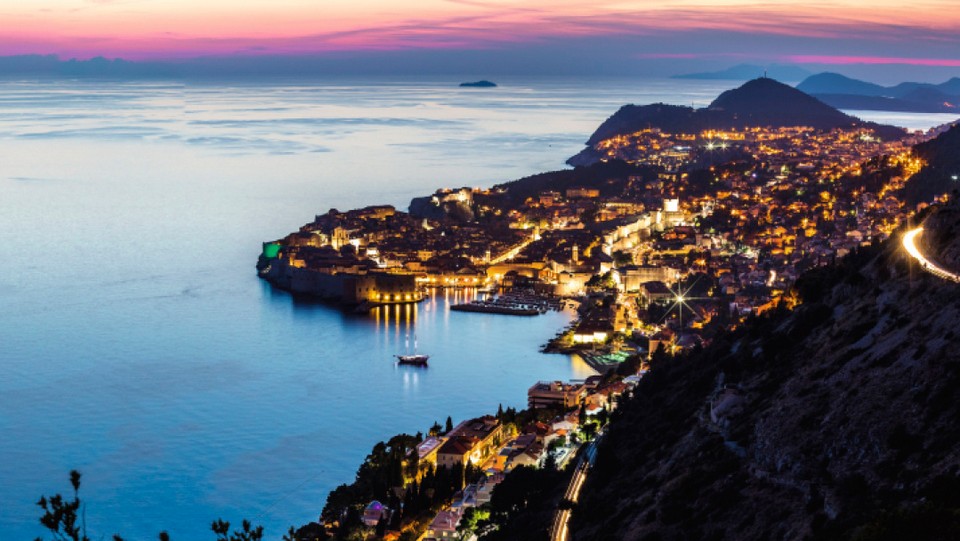
Are you looking for more top things to do in Dubrovnik: Tours, activities, attractions and other things? Let’s check it out here. And Croatia here.































![10 best airports in Asia in 2016 [RANKED] kuala-lumpur-international-airport-best airports in asia in 2016 by skytrax ratings](https://livingnomads.com/wp-content/uploads/2016/08/29/kuala-lumpur-international-airport-best-airports-in-asia-in-2016-by-skytrax-ratings-218x150.jpg)








